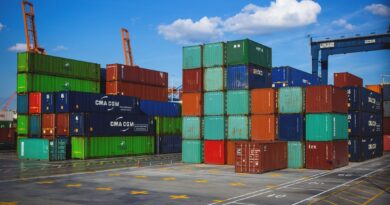Understanding the Factors Influencing Canadian Dollar Exchange Rates
The exchange rate of the Canadian Dollar (CAD) is subject to a complex interplay of domestic and international factors that collectively determine its value against other currencies. Investors, businesses, and policymakers alike closely monitor these variables to make informed decisions. In this article, we delve into the multifaceted landscape of Canadian Dollar exchange rates, exploring the key factors that shape its valuation in the global currency market.
- Interest Rates and Monetary Policy:The Bank of Canada (BoC) plays a pivotal role in influencing the Canadian Dollar’s exchange rate through its monetary policy decisions. Interest rates set by the BoC have a direct impact on the attractiveness of the Canadian Dollar to investors. Higher interest rates often lead to increased demand for the currency, appreciating its value. Understanding the nuances of the BoC’s policy decisions and their implications is crucial for anyone seeking to grasp the factors influencing Canadian Dollar exchange rates.
- Economic Indicators:Canada’s economic performance, reflected in key indicators such as Gross Domestic Product (GDP), employment rates, and consumer spending, significantly influences the Canadian Dollar exchange rate. Positive economic data tends to strengthen the Loonie, while negative indicators may lead to depreciation. This section of the article explores how economic indicators serve as barometers for the health of the Canadian economy and, consequently, impact the exchange rate.
- Commodity Prices and Resource Dependency:Canada’s abundance of natural resources, including oil, natural gas, and minerals, ties the Canadian Dollar closely to commodity prices. Global fluctuations in commodity markets can result in significant volatility for the Loonie. Understanding the relationship between resource dependency and exchange rates is crucial for anticipating the currency’s movements, especially in the context of Canada’s position as a major exporter of commodities.
- Global Trade and Trade Balances:Canada’s trade relationships, particularly with the United States, play a vital role in shaping the Canadian Dollar’s exchange rate. Trade surpluses or deficits impact the demand for the currency, influencing its value in the foreign exchange market. Trade policies, agreements, and geopolitical events also contribute to the intricate dynamics of the Canadian Dollar’s exchange rate. This section explores the interconnectedness between global trade and the Loonie.
- Inflation and Purchasing Power:Inflation rates affect the purchasing power of a currency, subsequently influencing its exchange rate. Understanding how inflation in Canada compares to that of other countries provides insights into the relative strength or weakness of the Canadian Dollar. Investors and traders often consider inflation differentials when making decisions in the foreign exchange market.
- Market Sentiment and Speculation:The foreign exchange market is not immune to the influence of market sentiment and speculative activities. Traders’ perceptions, risk appetite, and global economic trends can create short-term fluctuations in exchange rates. This section explores the role of sentiment in the forex market and how it contributes to the volatility of the Canadian Dollar.

Ultimately, the exchange rate of the Canadian Dollar is a result of a myriad of interconnected factors, both domestic and global. From interest rates and economic indicators to commodity prices, trade balances, and market sentiment, a comprehensive understanding of these variables is essential for individuals and entities engaged in international trade, investment, and financial planning. As the global economic landscape continues to evolve, staying informed about the factors influencing Canadian Dollar exchange rates becomes increasingly crucial for making strategic and well-informed decisions in the dynamic world of foreign exchange.



